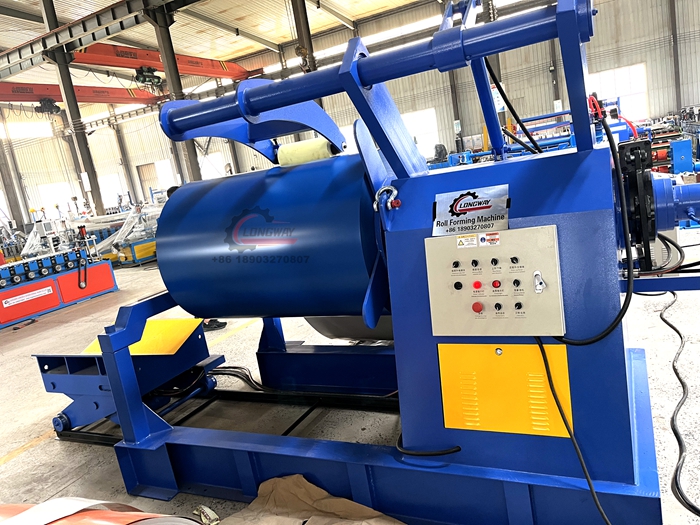Advanced Metal Roll Forming Solutions for Efficient Manufacturing and Design Flexibility
Understanding Metal Roll Forming Systems
Metal roll forming systems are critical in the manufacturing industry, offering a streamlined process for transforming flat metal sheets into specific shapes and profiles. This technology is utilized in various sectors, including automotive, construction, and appliance manufacturing, demonstrating its versatility and efficiency. The fundamental principle behind roll forming is relatively straightforward, yet it encapsulates advanced engineering and precise control, allowing for high production rates and consistency in the final products.
The roll forming process begins with the feeding of a flat strip of metal, typically coiled steel, into a series of rollers that progressively shape the material. Each set of rollers is precisely configured to impart a specific bend or curve, gradually transforming the flat strip into a desired cross-section. This continuous process can produce long lengths of formed metal sections, which can be cut to size according to the specifications of the end product.
One significant advantage of metal roll forming is the ability to create complex profiles with high accuracy. The use of computer-aided design (CAD) in the initial stages allows engineers to visualize and optimize the product design, ensuring that the roll forming profile meets all design requirements while reducing material waste. This precision is further enhanced by the use of advanced automation and control systems, enabling manufacturers to maintain strict tolerances throughout the production process.
metal roll forming systems

Another critical aspect of roll forming systems is their efficiency. The process is often faster than traditional metal fabrication methods such as stamping or punching, thanks to continuous operation and minimal handling of the material. Roll forming can also accommodate various types of materials—including aluminum, galvanized steel, and stainless steel—making it adaptable to different industry needs. Furthermore, the process generates less scrap compared to traditional methods due to the continuous feed of material, contributing to lower production costs and a more sustainable manufacturing approach.
In addition to these benefits, roll forming systems can be easily integrated with other manufacturing processes, such as welding, stamping, or assembly lines. This integration allows manufacturers to create more complex products with fewer operations, ultimately leading to a more streamlined production cycle. Moreover, roll formed components are often lighter than their counterparts made through other methods, which can be a significant advantage in industries where weight reduction is essential, such as the automotive sector.
However, it's important to note that the effectiveness of metal roll forming systems relies on proper design and setup. Each roll forming machine must be tailored to the specific requirements of the intended profile, including material thickness, width, and shape complexity. Additionally, regular maintenance and adjustments are necessary to ensure that the rollers and machine components remain in optimum condition, allowing for consistent quality and performance.
In conclusion, metal roll forming systems represent a sophisticated manufacturing solution that combines precision engineering with efficient production capabilities. Their ability to create intricate shapes from various metal materials makes them indispensable across numerous industries. As technology advances, we can expect further enhancements in efficiency, accuracy, and automation within roll forming systems, paving the way for even more innovative applications in the future. By investing in these systems, manufacturers not only improve their production processes but also position themselves to meet the growing demands of modern industry.
-
Roof Panel Machines: Buying Guide, Types, and PricingNewsJul.04, 2025
-
Purlin Machines: Types, Features, and Pricing GuideNewsJul.04, 2025
-
Metal Embossing Machines: Types, Applications, and Buying GuideNewsJul.04, 2025
-
Gutter Machines: Features, Types, and Cost BreakdownNewsJul.04, 2025
-
Cut to Length Line: Overview, Equipment, and Buying GuideNewsJul.04, 2025
-
Auto Stacker: Features, Applications, and Cost BreakdownNewsJul.04, 2025
-
Top Drywall Profile Machine Models for SaleNewsJun.05, 2025








